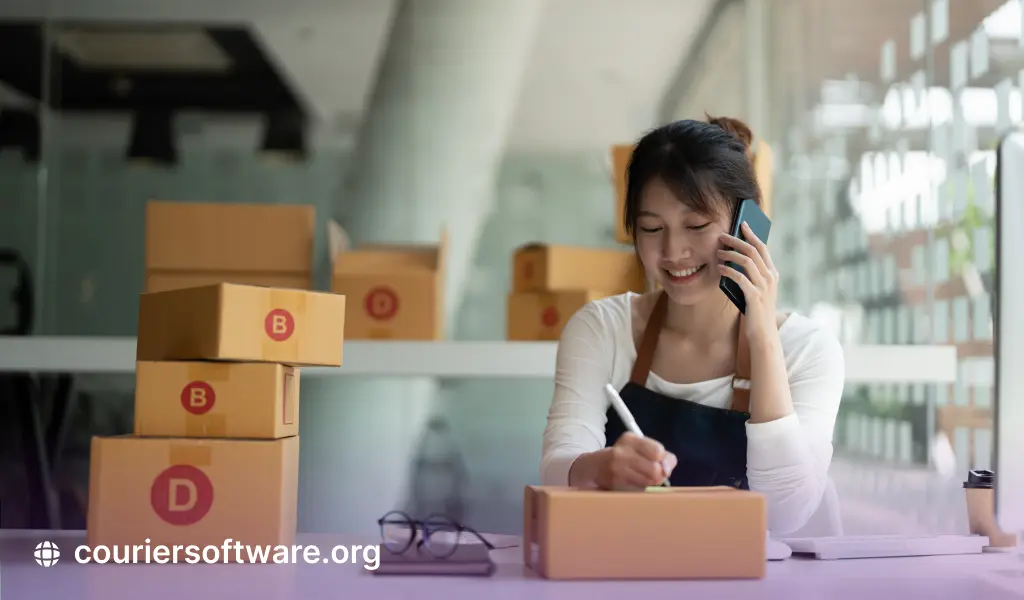Delivery confirmation is essential in the business world today. Numerous issues can be handled, including lost packages, late deliveries, and customer disputes.
There are two types of delivery proof:
- The paper delivery confirmation requires a signature and form.
- ePOD, or electronic delivery confirmation, is a message sent electronically.
Electronic or traditional proofs of delivery are both acceptable. While they fulfill the same purpose, they have different types of documents. At the time of delivery, the conventional POD method usually entails a physical signature by the recipient of the product. In this way, the driver gets the recipient’s information and then signs it after the product has been handed over.
The convenience and usefulness of electronic delivery tend to outweigh the disadvantages. For obtaining the recipient’s digital signature, many carriers use electronic Proof of Delivery. A Proof of Delivery app assists with this process by allowing digital signatures immediately upon delivery. It helps to keep the recipient’s data, and a mail is sent to him that contains the e-signature. Sender, recipient, and logistics departments receive a copy of all data in the system. As a result, it offers transparency to the business operations handled by the logistics and the senders.
The delivery person may ask for the sign-on digital tool before handing over the item if the customer places an order for online delivery. It is called proof of delivery. If a recipient electronically signs a document, they will receive a copy via email, reducing any future disputes that the package hasn’t arrived. It will free up your time to spend less time resolving customer complaints and more time streamlining your business and maximizing profits.
A proof of delivery is considered to confirm that the customer received the product under the dispatcher’s promise. There are times when people cannot get their desired or ordered product on time because the item could not be delivered. POD makes it possible for the sender and the recipient to make an agreement that implies the items were returned in good condition and delivered on time to the recipient.
Despite the traditional approach still being used today, securing accurate and real-time delivery confirmations is now easier than ever.
Electronic proof of delivery is more streamlined, time-efficient, and environmentally friendly by eliminating carrying around paperwork that might be damaged, lost or subject to human error.
Why Is Proof Of Delivery Critical?
In the first place, why does proof of delivery matter? While we have only touched on a few of the critical benefits of ePOD, there is much more to discover.
The delivery confirmation is digital proof that a company has filed an order and delivered the goods to a customer. Evidence will demonstrate what was delivered and when it was delivered, and to whom it was delivered. Ultimately, this eliminates any delivery disputes between the business and the customer and saves the business time and money. Whenever valuable, fragile, or essential documents are contained in the goods, this becomes increasingly important. Customers who electronically sign packages confirm that the items have arrived on time and are in good condition.
There are several reasons why proof of delivery is vital for businesses. Guarantee of delivery Software covers all aspects of delivery management from high scalability to accountability measures and strengthening business operations.
It is possible to store different data regarding the companies and product recipients with proof of delivery tracking. Among the data are the delivery timeframe, route taken by the delivery vehicle, customer comments, recipient information, and many more.
Proof of Delivery Vs. Bill of Delivery
It is now possible to monitor multiple product deliveries simultaneously, thanks to the Proof of Delivery tracking. The receipt signed by the recipient of the online order can help keep a record. Alternatively, a bill of lading is a document signed by the carrier upon receiving the product from the sender for transport to the recipient. Both of these documents are essential for shipping and delivery. Doing so aids in coordination and helps to eliminate any errors that could have been made to the recipient receiving the item.
- Digital signatures
- The POD system records both the recipient’s digital signature and the image of the parcel that was delivered on time.
- Complete no-contact service
In preparation for a possible Coronavirus outbreak when the entire world switches to a contactless process, our system also enables no-contact service all along the way. In light of the worldwide pandemic situation, this is vital.
- Identity authentication
- Identity recognition ensures that the Proof of Delivery app fully authenticates the recipient’s identity. To avoid any mistakes, they will recognize the receiver individual with their authentic ID details.
- Digital barcodes
- The barcode highlight of the Proof of Delivery system helps verify multiple parcels with barcode scanning. Barcode scanning simplifies record-keeping because it allows for real-time tracking.
Checking the Load and Providing Delivery Proof with the QR Scanner
Three steps are involved in this first process.
Step 1: Load Check
After the delivery driver starts their route, they will pass the load check to confirm they have loaded the order(s). Drivers can let you know if your packages aren’t loaded and assign them a rejected status. Once the boxes are loaded, the driver will use a QR scanner or barcode scanner app to locate the packages once they are loaded. You can track your order’s progress when it is picked up and sent to the delivery company.
Step 2: In Transit
The delivery driver will notify you that your package(s) have been picked up after passing the ‘load check’. You know that your goods are on their way to their final destination when you see this message.
Step 3: Proof of Delivery
Once the courier arrives at the recipient’s address, they will use a smartphone to obtain an e-signature. In this way, you will have proof that your goods have reached their final destination. With this, the driver can conclude the route.






